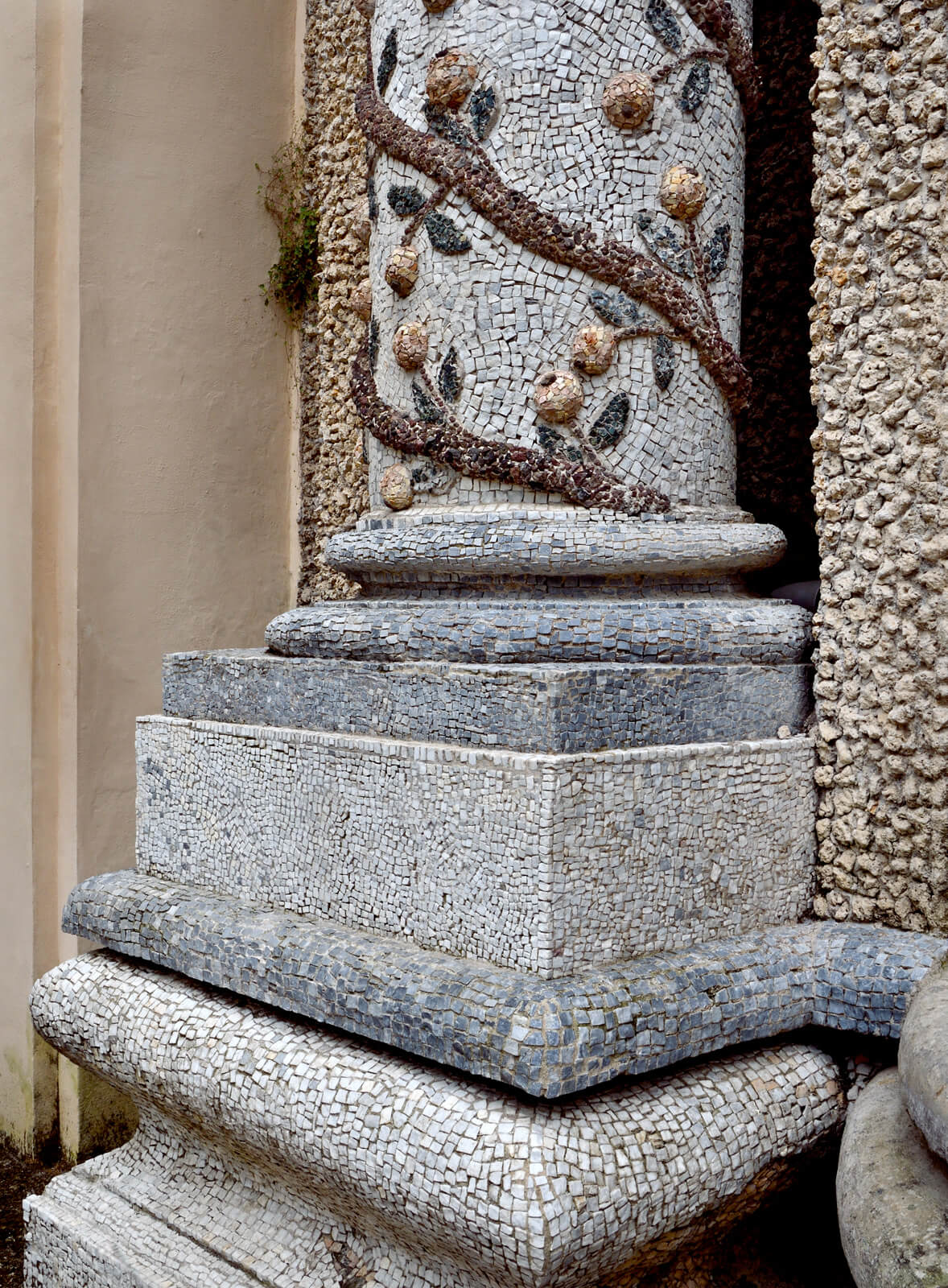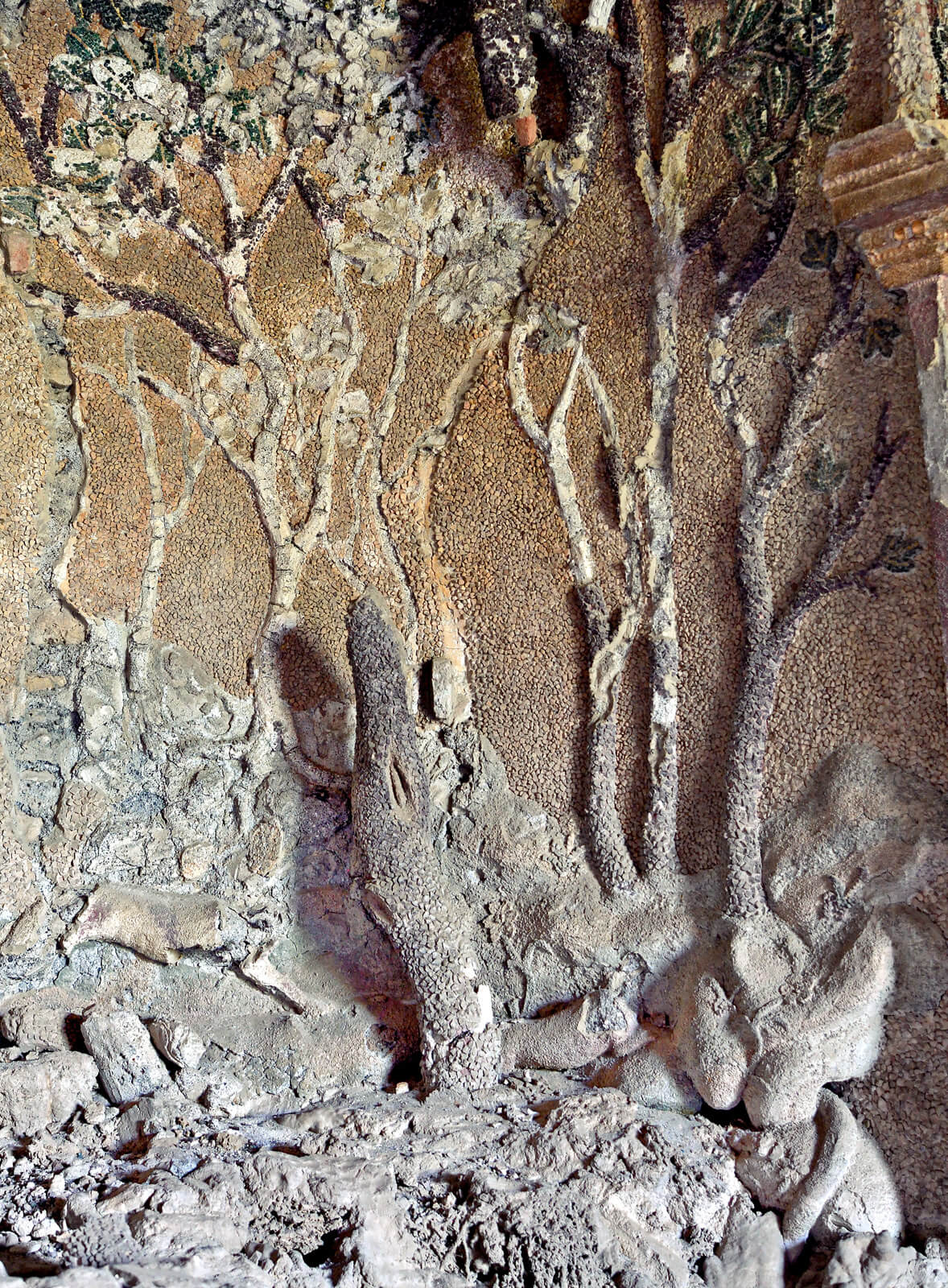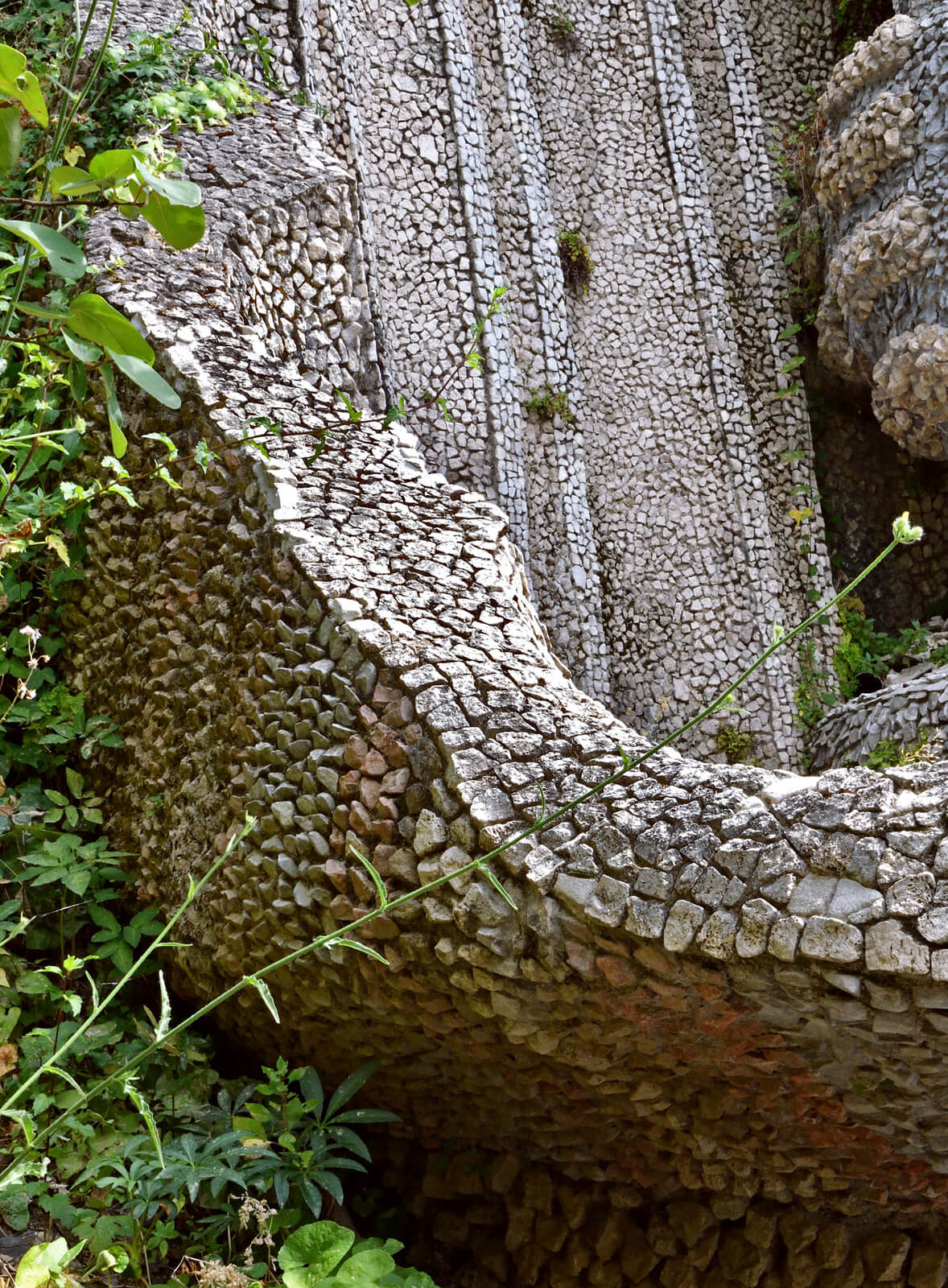
Pixels are the subatomic particles that make up a digital figure, its genetic code, its matrix, the smallest parts into which it can be broken down. Pixel, the funniest and most banal neologism of the twenty-first century, is the result of the contraction of the words “picture” and “element” and represents the smallest dot of light within the rectangular grid of tiny coloured foci that we call an image.
Our visual landscape, screens and device displays, all of these live off these grains, this digital flour that feeds and kneads together the diaphragm between us and the world, or even the world itself, because, there’s no avoiding it, nowadays the world is digital, or dare I say it, the world is only if it is digital.
In the end, nothing new under the sun in the eternal discourse of reality and how it is represented. But pixels are just the latest, freshest update of a paradigm that is as old as the hills, the art of creating images by combining small pieces, organizing and composing fragmented drawings into arrangements put together in strict order. A pixel is a discrete blotch of colour and light, located at the intersection of a row and a column, just like in crochet, or cross-stitch, or like a tessera in an ancient mosaic, or like flies are thought to see, with their compound reflectors made up of thousands of tiny lenses, each capturing a partial and precise angle of the surrounding space.
So, these are just some simple notes, scribblings, anecdotes, pieces of that collage called a mosaic, but if you really want to know more about the universe of the grid, about how dots and shapes are combined to create our visual perception, about the mesh that makes up the skin of everything, then you’ll have come to Tivoli, and step foot in its villas, which are a large-scale, in-vitro cultivation of pixels, grains, a parcelled reality.
The only way to walk here is at a snail’s pace. It comes naturally to slow down, to savour every inch, every moment, perhaps because the art of mosaic explicitly demands patience. We’re in a world that seems to be effortlessly held together, whose intimate tension we breathe in by osmosis. It’s a masterpiece of the art of dentistry, or rather of odontotechnics, a gentle, meticulous implantation that with oriental calm cuts into the skin of the world to embed there obviously not molars or canines, but glass enamel tiles, pieces of marble, fragments of ceramic, shells, and precious stones. I like this dental apparatus metaphor for mosaics: all too often reduced to mere decorative device, or opulent outfitting, they are mantles on which matters of love and death, power and magic are played out.
This vision of mosaics as a medicine or therapy is a convincing one. It emphasizes the natural engineering behind these Roman pavements that we find in Hadrian’s Villa. Spiritually consolidating the ground, they are restorative gestures that don’t just draw a passive, static, inert decoration, they allow us to discover and admit that every surface is living matter, a porous membrane, a place of exchange and contact.
Mosaics are close-built social organizations, writing sourced from bacteria, fungi, geology, life. The opus tessellatum, as the Latins called it, is a true symbolic system, a colourful acupuncture, a homely skin massage, made of self-control, a calculation that turns into care, not just a banal cosmetic cure. The people composing these intricate marvels and delights know full well that they are cultivating a sacred place, whose power derives from the time and attention it requires, and from the strength with which it resists the centuries. These age-old jigsaw puzzles bear witness to a dry, exact form of gardening, which makes the soil a kind of meticulously landscaped bone. Running our feet or our eyes over these stylizations helps sharpen our wits. Icy cold, syncopated, this mathematical epidermis grows endemic in the Aniene Valley, emerging like moss, sinuous like an orthogonal, iridescent musical score. The tightly packed dots of colour create a luminosity and brilliance that could not be achieved by traditionally mixing colours together, like a painter does. Famed for its Renaissance gardens, the water features of Villa d’Este, its terraces and picturesque views, and the ruins of Villa Adriana, in Tivoli, the mind does leaps; then, lo and behold these seedbeds of minerals that link everything together, and nature frozen in eternal forms, bring out the importance of the connection between things all the more.
Tickling our senses, this rough surface gifts us magical caresses. There is so much wealth in these textures. Going back through the centuries, Georges Seurat and Paul Signac were already working on this, and with them the hands knotting the wool of wondrously complex oriental rugs, the calm of the quills of medieval illuminators.
Then, in a flash, the doors of Diana’s grotto are flung open wide. And we seize upon the reason for all these fleeting appearances of the “law of the mosaic”. Thus far we had only tasted the crumbs, but now, after following the bees in flight, we have entered their hive, cloaked in honey, guests of the queen bee. We step into an absolute spectacle, a totally overwhelming, sugar-coated jewel, an artificial cave, created, rather than decorated, with a mixture of shells and rocks, cascades and ceramics, majolica and polychrome enamels. Somewhat stiff caryatids stand in each corner, holding baskets with golden apples, while decorative motifs extend all over the floor and the entrance vault.
We are in the house of Diana, in the realm of the Roman goddess of hunting and nature; the mythological scenes that line every square millimetre of this pulsating abdomen of matter illustrate the transformation of Daphne into a laurel tree, the liberation of Andromeda at the hands of Perseus, the metamorphosis of Actaeon, and the transformation of Syrinx, the nymph pursued by Pan, into a reed, from which Pan later made his famous musical instrument. In short, we are in the den of the cult of mutation, such as that of Callisto, the nymph seduced by Zeus, who prompted Hera, the supreme god’s wife, to transform her into a bear to allay her own jealousy. No wonder everything appears to be in a pulsating, metabolic state of becoming. During the Renaissance, it was fashionable to contrast the order and symmetry of formal gardens by creating these bewitching, cute artificial caverns, ideal places to while away the time in: part pleasure garden, part expanded stone cinema, part, why not, Korova Milk Bar, the club where Alex and his droogs go to have a good time and recharge their batteries before engaging in some of the ultraviolence recounted by Anthony Burgess and later directed by Stanley Kubrick in A Clockwork Orange.
It is very difficult to explain in words what it feels like to be in this Renaissance after-hours disco, a rollercoaster for courtiers inclined to fabulous escapades; it is a multiverse that overstimulates the gaze, but also the skin, the hearing, to some extent all the sensory receptors: it seems that here the light, as well as the other waves that run through the air, are all refracted in crooked, jerky but wholly pleasurable trajectories. The choreographic dances in Esther Williams’ technicolour swimming pools, the papier-mâché floats of the Viareggio carnival, the prosthetic tricks of Guillermo del Toro’s films, treacly music box marches… it’s awe-inspiring, a balm, an embrace, to take refuge in this Apollonian valley, with the echoes of the streams that bounced off the walls, bringing the light of the sunset to life, and its reflections that buzz between the bas-reliefs, the shells and the precious stones.
Courtesy Istituto Autonomo Villa Adriana e Villa d’Este (Tivoli, Rome) – Ministero della Cultura.
Situated in Tivoli, near Rome, the grounds of Villa d’Este are a masterpiece of Italian garden design with an amazing concentration of fountains, nymphaea, grottoes, water themes and an organ which produces watery sound effects. This is the place where, disillusioned at not being elected pope, Cardinal Ippolito II d’Este revived the splendour of the courts of Ferrara, Rome and Fointanebleau, and brought the magnificence of Villa Adriana back to life. Governor of Tivoli from the year 1550, he soon toyed with the idea of creating a garden on the slopes of the Valle Gaudente. UNESCO declared it a World Heritage Site in 2001. Villa d’Este in Tivoli, with its palace and gardens, is one of the most remarkable and comprehensive illustrations of Renaissance culture at its most refined. Its innovative design along with the architectural components (fountains, ornamental basins, etc.) make it a unique example of a 16th century Italian garden. Villa d’Este, one of the first giardini delle meraviglie, was an early model for the development of European gardens.
Villa Adriana was built between 118 and 138 AD by the Emperor Hadrian in the ancient Tibur, a lush and verdant oasis near Tivoli. The villa covered an area of at least 296 acres and included residential buildings, thermal baths, nymphaea, pavilions and gardens. The architectural and sculptural decorations of the villa were extraordinarily lavish and have been the subject of feverish and systematic research from as far back as Renaissance times. Almost all the major museums and collections in Rome, the rest of Italy and even Europe exhibit artefacts from Villa Adriana. At the present time, around 99 acres are open to visitors. UNESCO declared it a World Heritage Site in 1999.
The grotto of Diana was made in 1570–2, probably inspired by Pirro Ligorio. The myth of Hippolytus-Virbius, narrated and illustrated by Ligorio, explains the building and decoration of the grotto of Diana at Villa d’Este, which was to bring together the cults of the goddess and her protégé. The description from 1571 states that the grotto was “dedicated to honest pleasure and castity”.
The grotto of Diana is located in the garden of Villa d’Este, at the northern end of the so-called Viale Cardinale, under the Gran Loggia. Access from the villa is via a spiral staircase which gives onto the garden through a small iron gate. A large arch “to aereate the grotto” opens out to the right onto a covered loggia, overlooking the landscape with Rome and the sea in the distance. In the corners of the main, square chamber are caryatids on pedestals carrying baskets of fruit with sprays of Golden Apples of the Hesperides which extend to decorate the vault, culminating in an Este eagle in the centre. The large semicircular niche with rustic fountain in the back wall originally held a statue of Diana the huntress (now in the Capitoline Museums). The whole space—the floor, walls and vaults—is adorned with brightly coloured materials reminiscent of examples found in Liguria and France. Great basreliefs depicting the tragic stories of heroines inspired by Ovid’s Metamorphoses dominate the scene.





